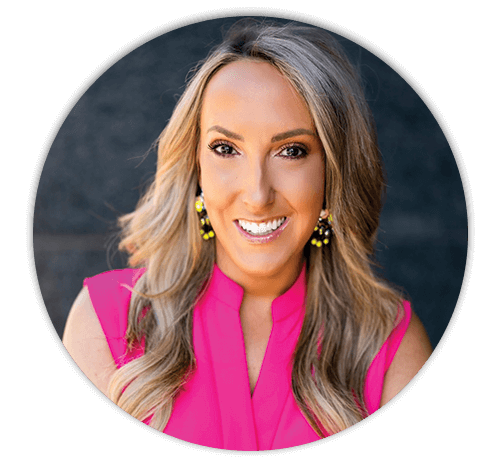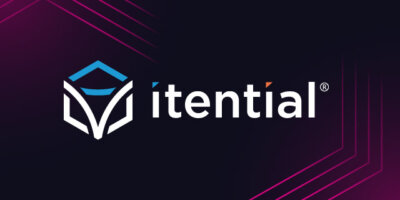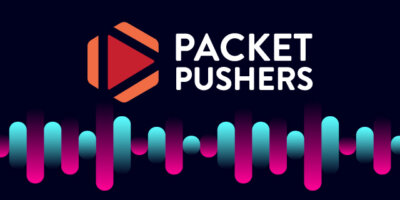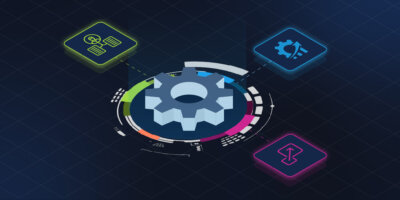“Multi-vendor network automation platforms are best aligned with the needs of larger scale and/or technologically advanced enterprises.” – Gartner
The recent Gartner report, the Market Guide for Network Automation Platforms, highlights the importance of these platforms for enabling automation and orchestration across complex, multi-vendor networks, with multiple cloud environments, public and private, and labyrinthine on-premises infrastructure. Advanced enterprise organizations are faced with a complex infrastructure reality that’s come about because different platforms, different tools, and different public cloud providers have suited different teams and applications over time. And these environments are only going to continue growing and sprawling as organizations will adopt new technologies, networks will expand to new domains, and application teams will continue innovating.
That means the task of automating across large and complex infrastructure requires a transformed approach.
By adopting the right platform — a solution that can “automate and orchestrate multiple vendors’ network functionality” — enterprises can increase the agility and efficiency of network infrastructure while lowering costs, reducing the amount of manual human errors, and ensuring compliance with required rules, regulations, and laws.
Scaling Network Automation Means Adopting Orchestration
Despite the clear benefits, automation of network activities in the enterprise is only increasing incrementally. According to Gartner, this is due to the proliferation of automation point solutions that create fragmentation, or silos of automation, making it difficult to automate an end-to-end service and limiting the speed at which network teams can deliver to the business.
Most organizations have several domain-specific automation tools and point solutions within their environments, but over 65% of activities are still performed manually—because even with point solutions for automating key tasks, engineers have to do a lot of manual work to coordinate workflows from start to finish. Change management, inventory, data gathering, security, validations, there are a lot of activities that have to be completed to execute a network change — not to mention any data manipulation that must occur when using a payload from one system as the input for another tool or platform.
For Infrastructure and Operations (I&O) leaders to move beyond siloed or tactical network automation implementations, Gartner recommends adopting larger-scale orchestration platforms with the goal of “connecting disparate silos of existing network automation tools that handle a narrow scope of activities.” Platforms that enable multi-domain orchestration are essential to increasing agility and efficiency of complex network infrastructure while keeping costs down.
Today, technologically advanced enterprise organizations must find ways to transform their infrastructure in order to meet key business goals. Everyone wants to move faster and do more, and companies are looking to adopt innovative technologies and strategies like generative AI and zero-trust security architecture. There is no practical way to scale up network automation to enable these priorities without adopting orchestration platforms. Manual work can’t keep up, and headcount can only be increased by so much.
The goal is scale, and scale means doing more, doing it faster, and maintaining security across increasingly complex environments.
What Core Capabilities Do You Need
The Gartner report lists out some top recommendations for infrastructure, operations, and cloud leaders prioritizing network orchestration:
Support the Tools Teams Already Use:
Enterprise organizations should look to maximize existing automation investments. Open source tooling such as Python, Ansible, and Terraform is key to building automations for specific networking activities. Commercial platforms like inventory and change management systems usually publish APIs that can be used for integration. A good orchestration platform will integrate with all of these tools so workflows can be coordinated across the stack, enabling teams to keep using the tools they use today and giving them full freedom to adopt new tools in the future.
Look for Published, Standard APIs & Simple Workflow UIs:
Organizations should ideally mandate that all products within their environments offer published, open, RESTful APIs to avoid extra custom work. In addition, solutions should offer a simple UI so that low-code network engineers can still orchestrate network change workflows.
In addition, the report lays out the following features as core capabilities for an effective network orchestration platform:
- Core Network Automation Capabilities: The ability to automate networking activities across multiple network vendors’ equipment, including CLI and API-enabled devices and services. Network engineers should be able to use the platform to directly adjust device configurations, and automate pre- and post-checks, but it should also provide API support for controllers and external platforms.
- Native Support for Public Cloud Services: Platforms should treat public cloud services as first-class citizens by automating network services inside of public cloud providers. Platforms must be designed to support automation in both “brownfield” and “greenfield” environments across multiple vendors’ equipment, services, and platforms. Pairing core network automation with API-driven cloud automation enables end-to-end orchestration.
- Turnkey Integration: Platforms should offer generally available integration plugins that enable rapid integration with relevant tools and vendors. When selecting a platform, leaders should ensure the platform enables orchestration across everything in their organization’s network and IT stack — and supports future tool choices as well.
- Self-Service & RBAC: The platform itself should publish a RESTful API that allows northbound consumption of unified, orchestrated network services. This allows for teams to scale up to self-serve networking by exposing orchestration workflows as network products to environments like ServiceNow — but only if the platform also enables appropriate security and access controls.
How Itential Helps Advanced Orgs Coordinate Across Domains
We have a history of leading the industry in network orchestration, and we’ve enabled some of the largest enterprises in the world to transform their networks and achieve greater business agility.
Itential is the only automation and orchestration platform built to support hybrid multi-cloud network infrastructure, making it easy for enterprise organizations to standardize and maintain network configuration and compliance, reduce manual operations, and simplify hybrid multi-cloud network management. It’s designed to integrate with everything in your stack, including all public and private clouds, any on-premises network infrastructure, and any external IT and networking systems like our partners ServiceNow, Infoblox, and NetBox — plus every high-code, CLI-driven automation tool and language network engineers use, including Python, Ansible, and Terraform.
With Itential, advanced enterprise organizations can be confident their infrastructure will easily and adaptively scale up to support business needs.
Want to learn more about network automation and orchestration and the role of orchestration in helping organizations scale? You can dive into the full Gartner Market Guide for Network Automation Platforms here.





